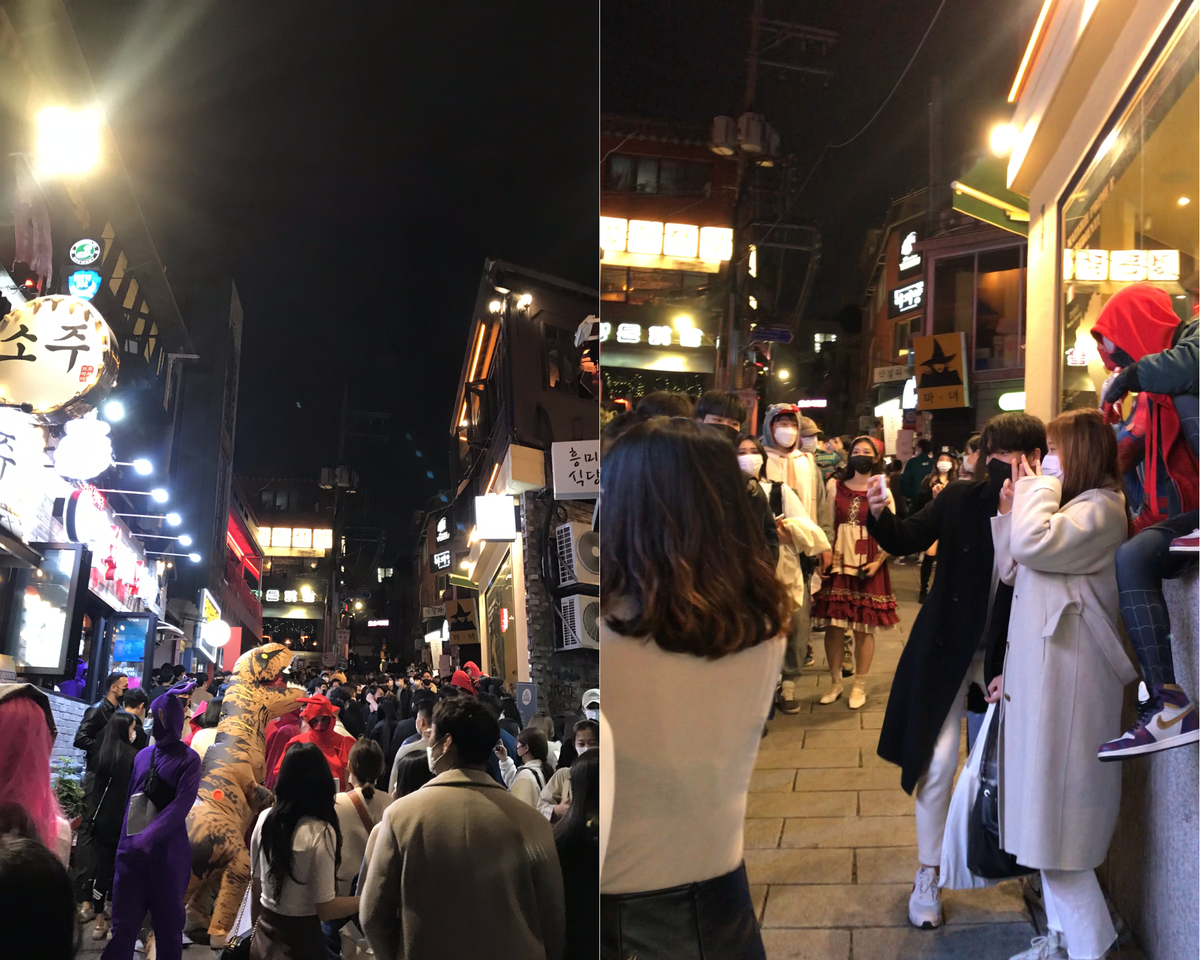Reflecting on the Itaewon-ro Stampede
On Saturday, Oct. 29, a stampede in the Itaewon district of Seoul, South Korea, claimed over 150 lives. Pho Vu ’23 reflects on the tragedy in Itaewon, a place that she herself has frequented.

While browsing Facebook at around 11 p.m. last Saturday, I saw some friends mark themselves as safe during “The Stampede at Itaewon-ro, Seoul, South Korea.” In today’s digital era, this is one of the fastest ways that young people can keep their families and friends reassured about their wellbeing. Initially, I didn’t look into the event further, brushing it off as one of the minor tragedies that happen every day. Little did I know, however, that the incident claimed more than 150 lives, leading President Yoon Suk-yeol to call for national mourning just hours later.
Young people had flocked to Itaewon-ro, one of the most diverse districts in Seoul, to celebrate Halloween in colorful costumes — and some of them never came home. The victims, primarily people in their 20s, were either trampled by a rush of people or suffered from asphyxiation.
If I type “Itaewon” into a search engine right now, the results are full of ominous photos of the incident: Chic restaurants and stylish bars are overshadowed by sirens’ lights and emergency responders. When I watched videos uploaded to social media, I was in disbelief at the sight of groups of people scattered across the street, desperately performing CPR on fallen bodies, hoping to save as many lives as possible. Students in South Korea have shared condolences as well as phone numbers for reporting missing people who may have been at Itaewon.
The festive-turned-deadly night reminded me of my own experience roaming the streets of Itaewon. At this time one year ago, I remember spending a night at the same place as the disaster with my friends. Halloween is a special holiday in South Korea when people traditionally flood the streets to celebrate. Last year, due to the high-flying success of Squid Game, hordes of young people flocked to the nightlife district of Itaewon dressed in costumes inspired by the globally popular television series. I still vividly remember taking pictures of my friends with one of the cosplayed characters. Back then, pandemic regulations still ruled, and everyone wore masks due to the surge in Covid cases. Last year, I recall a sea of people — but at least there was space. I can’t imagine what it was like for 100,000 participants to gather in the small alley this year.
The way the police handled the emergency reminds me of the Korean Coast Guard’s delayed response to the Sewol ferry accident in 2014. It speaks to the problems with Korea’s administrative management in urgent circumstances. On the night of the Itaewon tragedy, it took 90 minutes for help to arrive.
Itaewon is designed for pedestrians, and perhaps the lack of accommodation for vehicles impeded timely assistance for victims stuck in the heart of the street.
While the police admitted that their “inadequate” response was partially to blame for the mass casualty, the impatient individuals pushed and shoved in response to the slow-moving crowd should be identified as one of the major causes of the high death toll. A video depicting a violent push that caused people to topple forward has gone viral.
Amidst the deluge of news reports about the deadly incident, I found an NPR piece that offers eight helpful tips if we ever find ourselves in a massive crowd. I strongly favor the first tip: leave immediately as the crowd builds up.
Living in South Korea as an international student gave me an unusual perspective. When I was in Itaewon, I did not join the crowd for fear of losing my passport and other paperwork that allowed me to stay in Korea legally. As soon as I realized that the exit was going to be blocked by increasing numbers of partygoers, I quickly signaled my friends to leave.
It’s heartbreaking and enraging to see so many young people my age lose their lives in this tragic way. They deserve a carefree night to celebrate after experiencing so many pandemic-related constraints in the last three years. As frustrated as I am, I feel grateful for still being here and for all my friends who have made it home safely.
For my Sculpture course’s Halloween wearable sculpture assignment, I decided to commemorate the victims by designing a strapless tank top with a yellow fringe mini-skirt. The back of the top is painted with pink and topped with yellow paint splatters, representing the early enthusiasm of the celebration. I then covered the front of the top with black paint to represent the fatality of the night. The skirt is yellow to evoke the yellow ribbons used to commemorate the victims from the Sewol Ferry sinking incident in 2014. After finishing the assignment, all that was left inside of me was a sense of relief, equal to my gratitude for all my friends in South Korea still doing okay.
Amherst is a community where we care about one another. Make sure that anyone you know in South Korea is safe and sound.





Comments ()